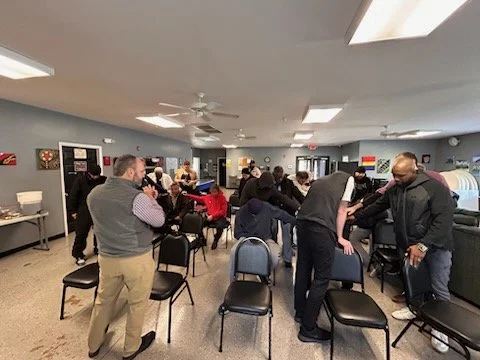
RESTORING HOPE
When you join the Sustainer’s Club, your monthly support helps men like Carlos to find rest, choose change, ignite hope, and grow resilience. Transform broken, hurting, and homeless neighbors into beacons of hope and inspiration!
Inasmuch exists to be the hands and feet of Jesus among the broken, hurting, and homeless.
Hope and Healing: Stories of Transformation
We don’t just see men facing homelessness - we see brothers, fathers, and sons. We call them FAMILY because they are more than just individuals in need. Their lives are important and their stories matter.
Here are a few of them:
* Stay Connected
* Stay Connected
Sign up for our newsletter to learn more about the lives changed at Inasmuch and how you can get involved.
The Reality and The Solution
Guided by Matthew 25:40
For men experiencing homelessness, the root causes are complex and filled with barriers for moving forward. There is a path toward healing at Inasmuch. When Jesus said “Inasmuch as you did it for the least of these, you did it for me,” he called us to offer compassion and service as if we were serving Jesus himself.
The Church’s Response
How We Respond
While government efforts have their place in addressing homelessness, we believe that the true impact comes from the Church - the body of believers - stepping in. Our approach is different because it’s rooted in relationships, working with people rather than to or for them.
We believe that three key approaches will lead to lasting change:
Fostering genuine connection
Structure with a focus on areas of holistic change
Accountability through goal setting and shared expectations
Understanding The Problem
What We Face
Most people experiencing homelessness suffer from the trimorbidity of:
a physical health condition
a mental health issue
substance abuse disorder
Trauma is nearly universal and their life expectancy is about 50 years as compared to 78 years for non-homeless Americans. There are over 800 people experiencing homelessness in Fayetteville on any given night.*
Last year, 465 of them came to Inasmuch seeking help.
*Point-in-Time Count








